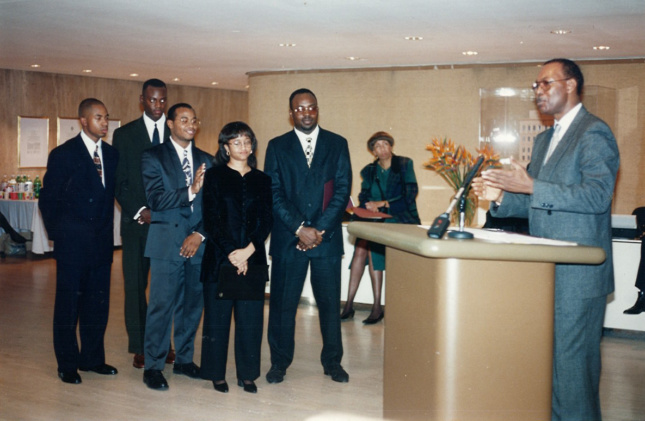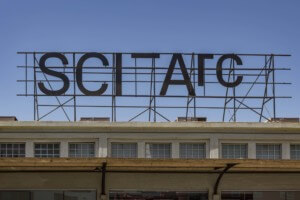The David C. Singler Foundation was established in 1994 to promote career development and offer internships to students of color entering the architecture and design professions. The New York City–based foundation recognized that African Americans were underrepresented in the design fields and set out to address the impediments to entrance into the profession. The foundation was named after David C. Singler, an African-American architect whose own life represented these challenges—and the attempts to overcome them—that face African Americans hoping to become architects in this country.
Singler, a life-long resident of Harlem, attended City College of New York (CCNY) and earned a master’s degree in architecture from Columbia before beginning a 30-year career as an architect.
In 1965 Singler took the New York State licensing exam but failed the design portion of the test. Both Lewis Kwit and Jim Howie, who were colleagues of Singler and helped establish the foundation and served on its board, highlighted the unfairness of the New York system and how it systematically kept African Americans out of the profession. In New York, applicants for licensure were required to appear in person before the board and could be turned down for practice. Singler, like many young designers in New York, took the Connecticut test, which many believed was fairer and which, through reciprocity, allows one to be licensed in New York State. By all accounts, Singler was extremely talented as a designer, manager, and businessman in the profession, but because of prejudice towards African Americans, had to take lesser jobs than his skills would allow.
He nevertheless had a long, successful career, beginning in the 1970s when he worked first for Western Electric and then for Nigerian entrepreneur T.I. Nwamu, planning and designing new towns in the plateaus of Nigeria. In the early 1980s he co-founded the company Construction Support Services with Jim Howie, who said that Singler was excellent at finding and completing work for their corporate clients. But in a meeting in 1992, Singler suddenly had a heart attack or stroke (no autopsy was performed) and died.

The architect had made such a profound impression on his colleagues that, in 1993, several of them decided to create the foundation to honor his memory. Its mission was to help young design students of color with a mentorship program and a mechanism for placing the best students in summer internships in major offices. The foundation went to the Pratt Institute and asked Dean Sidney Shelov to forward the best African-American students to receive the internships. They then asked important professionals like Juliet Lamb, head of interiors at HOK, if she would take interns. She did, as did Perkins Eastman, Gensler, Taylor Clark Architects, and SOM. Architects Andy Jordan and Shaneekua (née Bent) Henry both received internships in this way and believed it helped them advance in their careers.
Jordan, who now owns his own firm, AMPED Architecture, said that though he had a strong background as a student at Art and Design High School and did well as a student at Pratt, this experience as an intern at HOK opened up a whole new world of experiences for him. Furthermore, Juliet Lamb served as a lifelong role model and mentor, and the internship gave him the “psychological edge” to advance in the profession.
Henry, an intern at SOM for three years, likewise praised the Foundation for helping her get an advantage in the workplace while she was a student at Pratt from 1995 to 1998.
The Singler program lasted about six years, or until the foundation believed they were no longer getting qualified students for these important positions from Pratt. The program, which received support from Morgan Freeman, jazzman Chico Hamilton, and Mayor David Dinkins, sent many young African-American students into the workplace, including: Henry, Julio Colon, Carlyle Fraser, Jr., Celeste Lane, Lashford Lowe, Steven Morales, Damian Ponton, Joseph Warner, and Brian West.
Architectural internships today are often criticized for being exploitative of young workers, but this is an example of how this foundation used this system to give people a push forward into a career.











